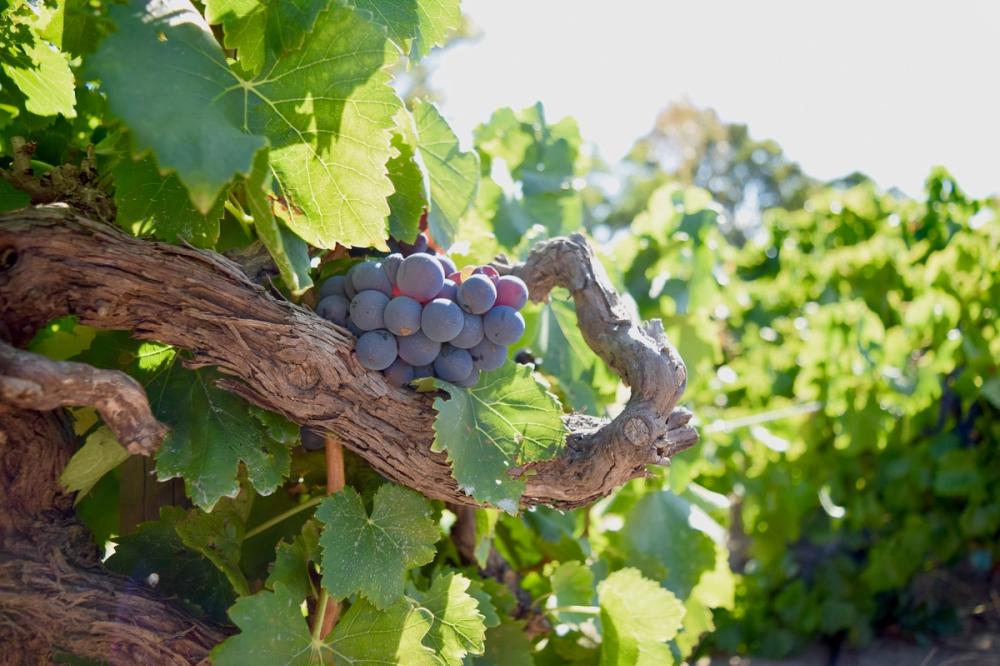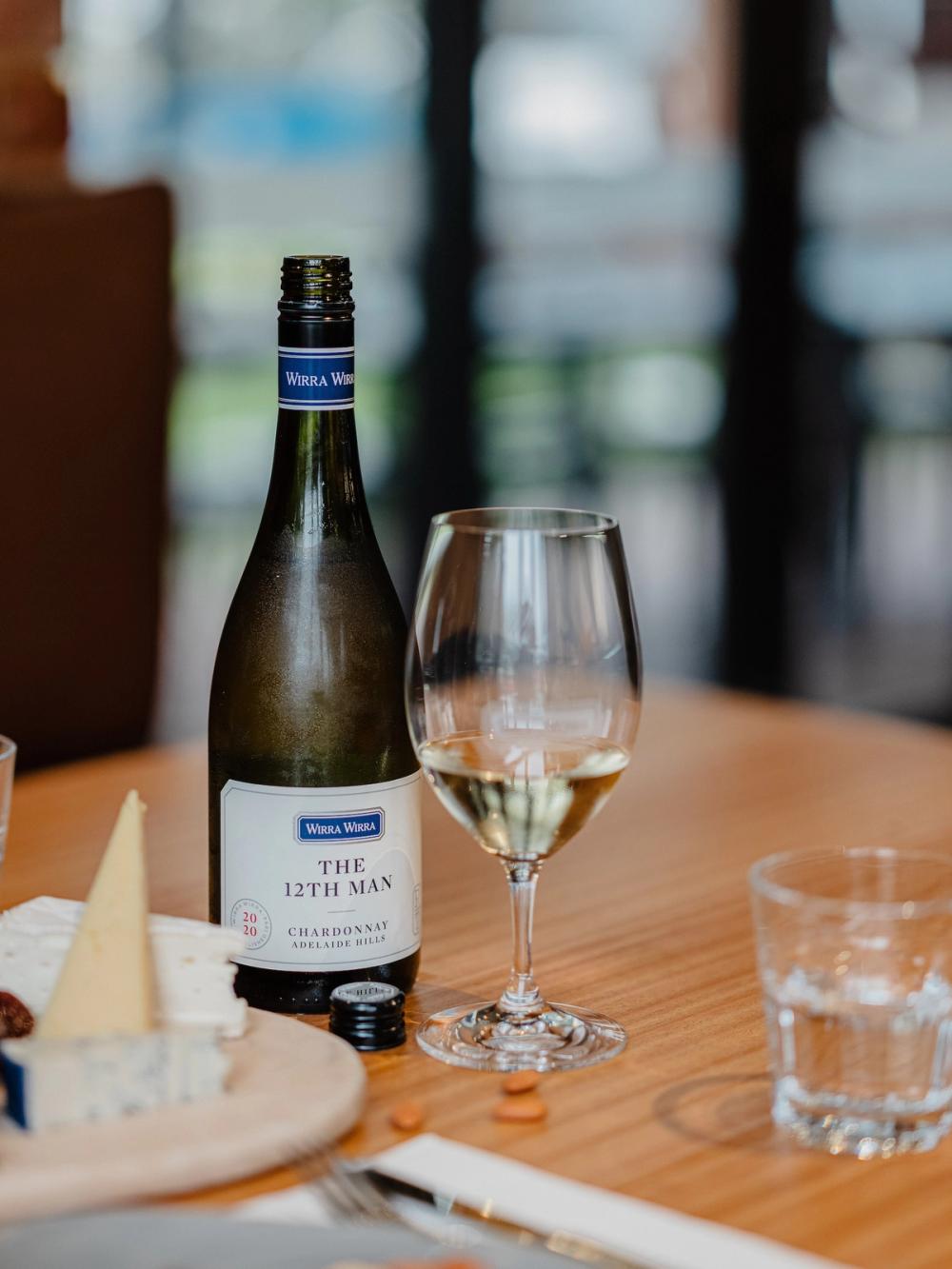“Wirra Wirra’s consistent commitment to quality has helped it retain a position as one of Australia’s most respected wine brands,” writes Keay.
If Damian White, Wirra Wirra’s new director of sales, is tired, he’s determined not to show it. After the best part of two years being grounded thanks to Covid, the Queensland-born Australian has been following a punishing schedule to catch up for lost time, first taking the direct 18-hour Perth-London flight before heading onto the Netherlands and up into Scandinavia. All this before heading back to the UK for appointments including presenting the Wirra Wirra portfolio at González Byass’ annual tasting at IET, next to the Savoy Hotel, and meeting buyers here to bolster the brand. Just about the only regret he has from this busy schedule was that he took a flight to Amsterdam directly after landing in London from Perth.
“In retrospect, that was probably a mistake – I should have rested up here in London for a while. And yes, around 5pm I’m beginning to flag a little, which isn’t like me. But then, there’s so much to do!” he says.

The Wirra Wirra estate at McClaren Flat
This whirlwind of travel is all a far cry from home, which for the past few years has been McLaren Flat, adjacent to McLaren Vale, home to Wirra Wirra since the iconic winery was first established in what was then an unknown region to the south of Adelaide, in 1894.
“We live in such a beautiful part of the world and are spoilt by all that an internationally recognised wine region offers. Yet it is only 15 minutes to beautiful beaches and iconic coastline holiday destinations where we spend much of our spare time in the caravan with friends,” says White who lists love of the outdoors as one of his great passions (after wine, of course).
With global warming being an increasing threat everywhere – but especially in Australia – White has also opted to be a fully qualified firefighter and active volunteer with the South Australian Country Fire Service and is on call 24/7 when available to assist with both structure and bush fires, as well as road crash rescue.
“I’ve had the very satisfying pleasure of saving a beautiful koala with burnt feet from the recent bush-fires that devastated much of South Australia,” he recalls.

Just 45 minutes from Adelaide, McClaren Vale is one of Australia’s oldest wine regions
Church Block turns 50
But White’s fire-fighting has hardly been needed to promote Wirra Wirra, whose blue and white labels and consistent commitment to quality has helped it retain a position as one of Australia’s most respected wine brands. Volume is now around two million bottles a year and although the range now comprises 12 wines, fully half that volume is the best-selling Church Block, the biggest selling McLaren Vale wine and Australia’s third biggest selling red wine label. Part of White’s mission here is to make the brand even better known here, especially given that the yet to be released 2022 vintage will see Church Block celebrate its 50th anniversary.
“It’s a wonderful moment for a wonderful wine,” says White who maintains that the Church Block – a blend of Cabernet Sauvignon (48%), Shiraz (42%) and Merlot (10%) – remains one of the best value quality wines on the market. He points out that most of its Australian competitors in this £13-15 price range come from grapes gathered from all over South-eastern Australia, whilst Church Block’s grapes are all derived from within the premium wine region that is McLaren Vale.

White reminds me that Church Block used to be a Grenache-Shiraz blend until around 20 years ago because the vines on the actual Church Block – named after the church located on the site next to the Wirra Wirra winery – were of those varieties. Since then the aim has been consistency; although there is a little vintage variation, Wirra Wirra winemakers, who typically work with at least 20 parcels of grapes taken from across the region, work hard to ensure the wine essentially remains the same, from year to year.
“It can be a challenge for them, for sure, but it’s worth it. This is a wine people love to love; they know exactly what they are going to get, without any nasty surprises,” he says. And that is a solid, well-made wine, with a powerful yet not overwhelming structure and weight, perfect for immediate drinking but also able to improve with some ageing.
“How would I describe it? Yummy,” he says, although he says Church Block’s fantastic taste profile owes much to McLaren Vale’s Mediterranean climate which produces elegant but also quite spicy fruit, with the nearby ocean making these wines a lighter and more balanced proposition that those famously heavy ones from much further inland Barossa.

Wirra Wirra: defined by its past
Fully committed to sustainable agriculture, all Wirra Wirra’s vineyards are certified organic and biodynamic and the winery is committed to an officially endorsed net zero emissions strategy. However, in many ways this is a winery that remains defined by its past and, in particular, by two eccentrics – “larrikins” according to White – who proved key to its future evolution.
Former state cricketer Robert Strangways Wigley first established Wirra Wirra’s vineyards in 1894 – falling foul of the law, he had to leave Adelaide so headed south into what was then a little-known part of the country – and ran them until his death in 1926; they fell into disrepair ten years later. In 1969 Richard Greg Trott saw an opportunity and revived the winery running it until his passing in 2005, building up the Church Block brand and many others besides, essentially turning Wirra Wirra into the company it is today.

All this can be found on its labeling, and in the names chosen for the wines. Church Block is, of course, named for the block of land next to the church that abuts the winery; the flagship 100% Grenache wine The Absconder is, of course, named after Wigley’s flight from Adelaide and comes from 100 year old vines first planted by the man himself.
The deliciously smooth 2016 vintage we taste, carefully produced with open fermentation on ancient basket presses, and again balanced to ensure soft tannins would, I’m sure, have met with the old man’s staunch approval.
The hefty but balanced and cassis-charged Woodhenge Shiraz (currently on 2019 vintage, retailing typically for around £20) is named after the wooden but Stonehenge-like structure that sits outside the winery, made from huge ancient red gum trunks; the Catapult Shiraz (2020, typically around £17) owes its name to the catapult Trott wanted to build to fire bottles of wine into neighboring vineyards (but never got around to making). Another wine, a light, 100% pink Moscato called Mrs Wigley, is named not after Robert Strangways Wigley ‘s wife – indeed he remained a bachelor – but after his beloved cat whom he wanted to see immortalized after it passed (around £12).
The 12th Man Chardonnay – currently 2021 vintage – again speaks of Trott’s love of cricket (he dreamt of wearing the Australian cricket team’s green cap as 12th Man, if only to carry the drinks). This 12.5% Chardonnay, made with 100% wild yeast and fermented in fine French oak, is the riposte to anyone who suggests Australian Chardonnay is too fat and oaky, or more recently, as many winemakers overcompensated by going too far in the other direction, too lean, mean and acidic. This one, frankly, tastes just right and seems something of a steal, retailing at around £22 a bottle over here.
“This is one of our most serious wines and the hardest to get right. We want the fruit to be the star here and it is – all hand-picked in the Adelaide Hills, with no added yeasts and undergoing slow indigenous ferment, this has become a staple wine for us. So much so, frankly, that we can’t keep up with demand,” says White.

So how does the future look?
After some rough years when Australia’s reputation looked rather battered quality-wise (too much sameness, too many similar brands, amidst rising prices and some poor vintages), things look pretty rosy. This despite China’s boycott – imposed because of Australia demanding an international investigation into the origins of Covid 19 – which has hit some producers pretty hard (but not Wirra Wirra which has a diversified exports market).
“These are exciting times for Australian wine. The 2021 vintage really was cracking, both in terms of volume and quality, particularly in South Australia,” he says, adding that producers including Wirra Wirra are planting varieties such as Tempranillo and Fiano which can do unusually well in McLaren Vale despite this region historically not being particularly favourable to white wine. And more Garnacha is being planted, suggesting Wirra Wirra is following the broad national trend and moving away from typically French varietals although obviously these will continue to define its main brands, including of course, Church Block.
So how does White see the future for Wirra Wirra? He refers me to the quotation from Greg Trott which is inscribed in stone at the entrance to Wirra Wirra’s cellar.
“Never give misery an even break, nor bad wine a second sip. You must be serious about quality, dedicated to your task in life, especially winemaking, but this should all be fun.”
As life and winemaking philosophies go, that’s pretty hard to beat.
The Wirra Wirra wines are imported into the UK by González Byass UK









































